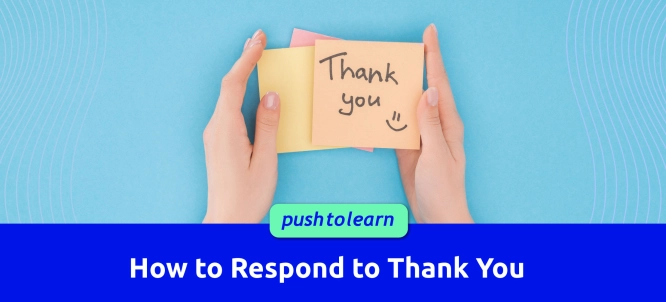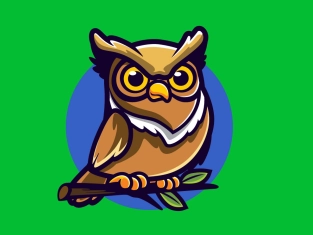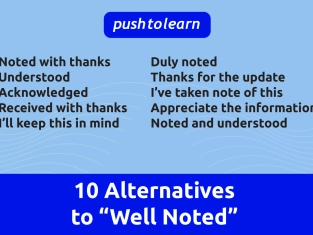by PushtoLearn
How to Respond to Thank You
Table of Contents
- Why Responding to "Thank You" Matters
- 10 Best Ways to Respond to "Thank You" Messages & Texts
- How to Respond to Thank You – Exercises
- Tips for Choosing the Right Response
- Basic Rules for Responding to Thank You
- Common Ways to Respond
- Common Errors to Avoid
- Everyday Use Examples
- FAQs About Responding to Thank You
Why Responding to "Thank You" Matters
When someone says "thank you," it’s polite to reply. It shows appreciation and keeps the conversation friendly. In English, there are many ways to respond, depending on the situation.
For example, replying to a friend might be different from replying to a customer or boss. Learning the right response will help you sound confident and polite.
10 Best Ways to Respond to "Thank You" Messages & Texts
Replying to "thank you" messages can sometimes feel confusing. Whether it’s a quick text from a friend or a formal email, the way you respond depends on the tone and context. Here are the 10 best responses you can use in different situations, with examples to help you!
1. You're Welcome
This is the most common and versatile reply. It works in almost any situation, from casual to formal.
Example:
-
Text: "Thanks for your help with the project!"
-
Reply: "You're welcome!"
2. My Pleasure
This phrase is polite and formal, often used in professional settings or to sound extra courteous.
Example:
-
Text: "Thank you for explaining the report details."
-
Reply: "My pleasure!"
3. No Problem
A casual, friendly response that works well in informal settings.
Example:
-
Text: "Thanks for grabbing coffee for me!"
-
Reply: "No problem!"
4. Anytime
This is a warm and reassuring reply, suggesting you’re happy to help again if needed.
Example:
-
Text: "Thanks for being there for me yesterday."
-
Reply: "Anytime!"
5. Don’t Mention It
This phrase means “it’s not a big deal.” It’s informal but polite.
Example:
-
Text: "Thanks for fixing my computer."
-
Reply: "Don’t m
6. Happy to Help
Use this to show that you genuinely enjoyed helping the person. It’s professional yet friendly.
Example:
-
Text: "Thanks for explaining the software process to me!"
-
Reply: "Happy to help!"
7. That’s What Friends Are For
Perfect for close friends or family, this phrase feels warm and caring.
Example:
-
Text: "Thanks for listening to me vent."
-
Reply: "That’s what friends are for!"
8. Glad I Could Help
This is a humble and polite way to respond, suitable for many situations.
Example:
-
Text: "Thanks for helping me finish the presentation!"
-
Reply: "Glad I could help."
9. No Worries
This is casual and often used in day-to-day conversations. It’s similar to "no problem."
Example:
-
Text: "Thanks for covering my shift!"
-
Reply: "No worries!"
10. Absolutely
This enthusiastic response is great for friendly or informal texts. It adds positivity to your reply.
Example:
-
Text: "Thanks for recommending that book—it’s amazing!"
-
Reply: "Absolutely!"

How to Respond to Thank You – Exercises
These exercises focus on How to Respond to Thank You
Tips for Choosing the Right Response
|
Context |
Best Responses |
|
Formal/Professional |
"You’re welcome," "My pleasure," "Glad I could help" |
|
Friendly/Casual |
"No problem," "Anytime," "No worries" |
|
Close Friends/Family |
"That’s what friends are for," "Anytime," "No problem" |
Basic Rules for Responding to Thank You
Here are some simple guidelines to follow:
|
Situation |
Polite Response |
Casual Response |
|
Formal (work, business) |
"You're welcome." |
"My pleasure." |
|
Friendly (friends, family) |
"No problem." |
"No worries." |
|
Helping someone |
"Happy to help!" |
"Anytime!" |
Common Ways to Respond
1. Polite Responses
Use these in formal or professional situations:
-
"You’re welcome."
-
"It’s my pleasure."
-
"Glad I could help."
Example:
Person A: Thank you for the report.
You: You’re welcome!
2. Casual Responses
Use these with friends or family:
-
"No problem."
-
"No worries."
-
"Don’t mention it."
Example:
Friend: Thanks for driving me home!
You: No problem!
3. Friendly and Positive Responses
Use these when you want to be encouraging:
-
"Anytime!"
-
"Happy to help!"
-
"That’s what friends are for!"
Example:
Person B: Thanks for helping me move!
You: Anytime!
Common Errors to Avoid
-
Not Responding at All
-
Ignoring a “thank you” might seem rude. Always acknowledge it, even with a simple "you're welcome."
-
Being Too Casual in Formal Settings
-
Avoid phrases like "no worries" or "don’t mention it" in professional situations.
-
Overusing One Phrase
-
If you always say “you’re welcome,” it can feel robotic. Try mixing it up with “my pleasure” or “happy to help.”
-
Using "It’s Okay" Incorrectly
-
Avoid saying "it’s okay" after "thank you." It might sound like the person caused a problem.
Everyday Use Examples
|
Situation |
What Someone Says |
How You Reply |
|
A friend borrows your book. |
"Thanks for lending it!" |
"No problem!" |
|
A coworker thanks you for help. |
"Thank you for explaining!" |
"Glad I could help." |
|
A stranger thanks you for holding the door. |
"Thanks so much!" |
"You’re welcome!" |
|
A customer thanks you. |
"Thank you for your help." |
"It’s my pleasure." |
FAQs About Responding to Thank You
Can I say "no problem" in formal situations?
No, it’s better to say "you’re welcome" or "my pleasure" in professional or formal settings.
Is "don’t mention it" polite?
Yes, but it’s casual. Use it with friends, not in business settings.
What does "anytime" mean?
It means you’re happy to help whenever needed. It’s friendly and casual.
Should I always respond to "thank you"?
Yes, it’s polite to respond. Even a simple “you’re welcome” is better than no reply.
How do I respond to "thanks a lot"?
You can say, "You’re welcome," "No problem," or "Glad I could help," depending on the situation.

